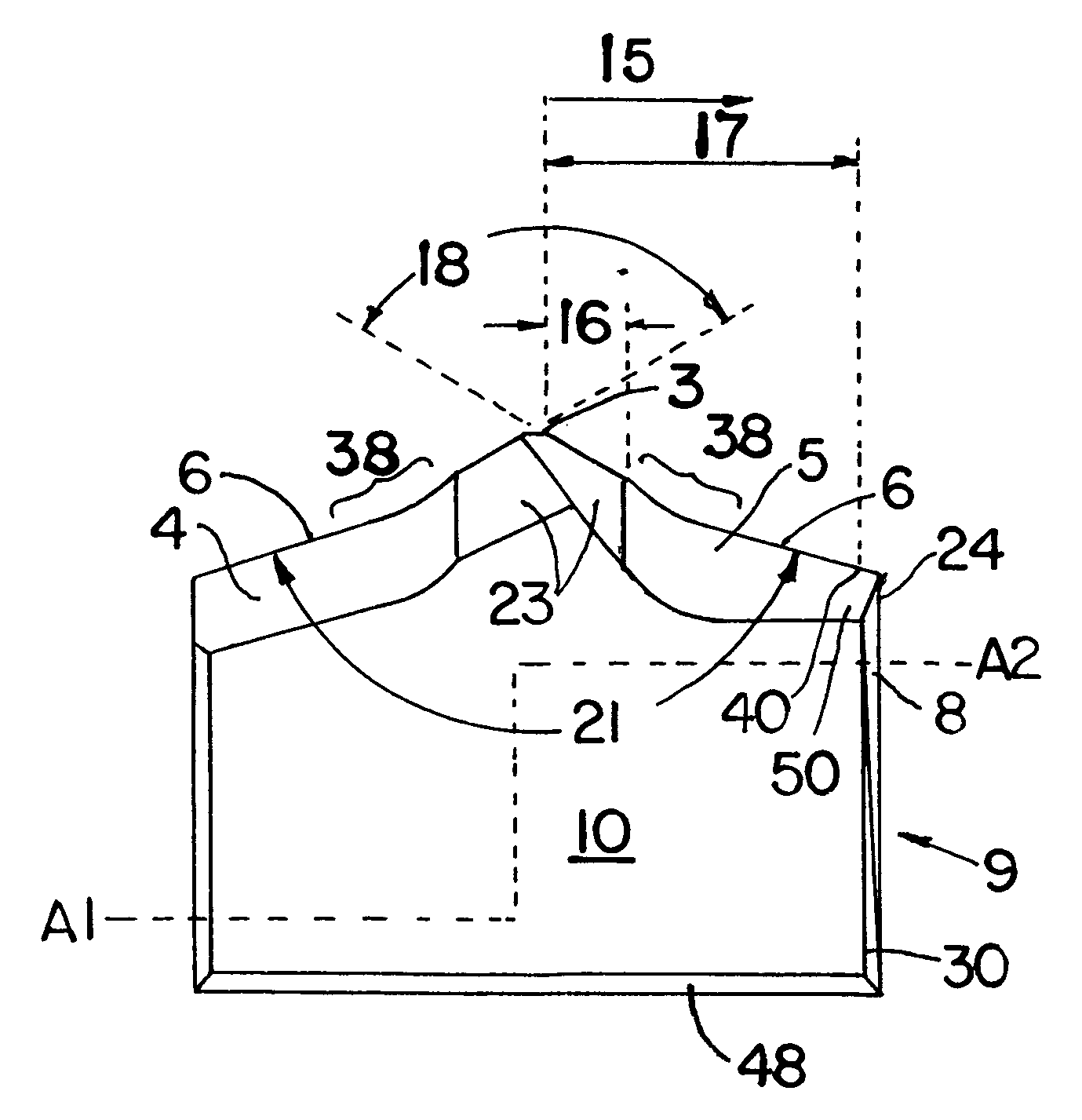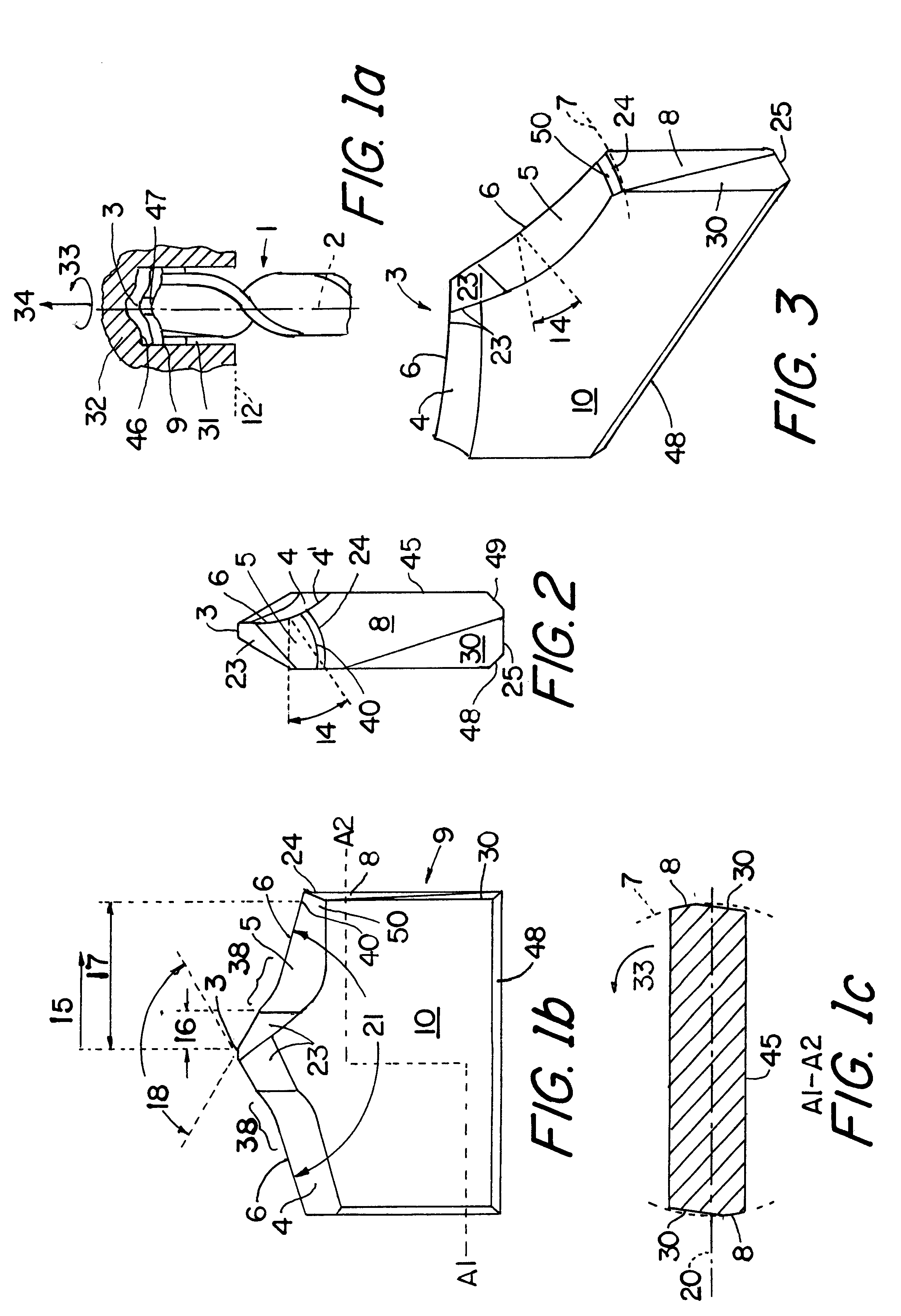Hard metal drill bit for use on a drill
a cutting tip and drill bit technology, which is applied in the direction of turning tools, boring/drilling tools, reaming tools, etc., can solve the problems of hard metal cutting tip being subjected to extreme wear in the outer cutting region, reducing the service life of the drill bit, and welded work material particles to the cutting fa
- Summary
- Abstract
- Description
- Claims
- Application Information
AI Technical Summary
Benefits of technology
Problems solved by technology
Method used
Image
Examples
Embodiment Construction
FIG. 1a schematically depicts the basic structure of a drill 1 with a hard-metal cutting tip placed thereon. The drill 1 is preferably a hammer drill or a percussion drill. The drill 1 is shown in a workpiece drillhole 31 inside a workpiece 32 to be machined. The drill 1 has a spiral shape that facilitates the carrying off of material machined from the workpiece drillhole 31. The hard-metal cutting tip comprises a drill point 3 through which the axis 2 of rotation of the drill 1 passes. The hard-metal cutting tip projects at the drill point 3 beyond the end 47 of the drill 1 and at its small sides 9 beyond the outer diameter of the drill 1. The feed motion 34 of the drill 1 proceeds longitudinally to the axis 2 of rotation of the drill 1. The cutting motion 33 of the drill 1 proceeds perpendicularly to the feed motion 34. The cutting motion 33 and the feed motion 34 are therefore borne substantially by the hard-metal cutting tip. The surface 46 of the workpiece 32 being machined tha...
PUM
| Property | Measurement | Unit |
|---|---|---|
| clearance angle | aaaaa | aaaaa |
| clearance angle | aaaaa | aaaaa |
| point angle | aaaaa | aaaaa |
Abstract
Description
Claims
Application Information
 Login to View More
Login to View More - R&D
- Intellectual Property
- Life Sciences
- Materials
- Tech Scout
- Unparalleled Data Quality
- Higher Quality Content
- 60% Fewer Hallucinations
Browse by: Latest US Patents, China's latest patents, Technical Efficacy Thesaurus, Application Domain, Technology Topic, Popular Technical Reports.
© 2025 PatSnap. All rights reserved.Legal|Privacy policy|Modern Slavery Act Transparency Statement|Sitemap|About US| Contact US: help@patsnap.com


